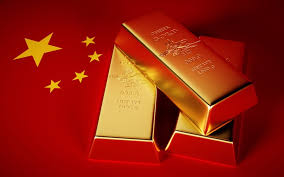
Breaking News
 High-Level Sources: Covert War In US, Israeli & Foreign Intel Agencies, Behind Epstein Case...
High-Level Sources: Covert War In US, Israeli & Foreign Intel Agencies, Behind Epstein Case...
 Hegseth Hosts Netanyahu at the Pentagon, Says It Was an 'Honor' To Be Part of the War Agains
Hegseth Hosts Netanyahu at the Pentagon, Says It Was an 'Honor' To Be Part of the War Agains
 Saagar Enjeti on the Dangerous New Developments in Pam Bondi's Epstein Cover-Up
Saagar Enjeti on the Dangerous New Developments in Pam Bondi's Epstein Cover-Up
 Does Elon Musk's Third Party Have a Prayer? Trump Is Not a Believer
Does Elon Musk's Third Party Have a Prayer? Trump Is Not a Believer
Top Tech News
 Insulator Becomes Conducting Semiconductor And Could Make Superelastic Silicone Solar Panels
Insulator Becomes Conducting Semiconductor And Could Make Superelastic Silicone Solar Panels
 Slate Truck's Under $20,000 Price Tag Just Became A Political Casualty
Slate Truck's Under $20,000 Price Tag Just Became A Political Casualty
 Wisdom Teeth Contain Unique Stem Cell That Can Form Cartilage, Neurons, and Heart Tissue
Wisdom Teeth Contain Unique Stem Cell That Can Form Cartilage, Neurons, and Heart Tissue
 Hay fever breakthrough: 'Molecular shield' blocks allergy trigger at the site
Hay fever breakthrough: 'Molecular shield' blocks allergy trigger at the site
 AI Getting Better at Medical Diagnosis
AI Getting Better at Medical Diagnosis
 Tesla Starting Integration of XAI Grok With Cars in Week or So
Tesla Starting Integration of XAI Grok With Cars in Week or So
 Bifacial Solar Panels: Everything You NEED to Know Before You Buy
Bifacial Solar Panels: Everything You NEED to Know Before You Buy
 INVASION of the TOXIC FOOD DYES:
INVASION of the TOXIC FOOD DYES:
 Let's Test a Mr Robot Attack on the New Thunderbird for Mobile
Let's Test a Mr Robot Attack on the New Thunderbird for Mobile
 Facial Recognition - Another Expanding Wolf in Sheep's Clothing Technology
Facial Recognition - Another Expanding Wolf in Sheep's Clothing Technology
China's gold hoarding: a bad omen for the dollar

The intensifying gold rush on the part of central banks suggests the fallout from Donald Trump's fiscal handiwork is just beginning.
As top monetary authorities pile into gold at historically elevated prices, the real goal is reducing exposure to the US dollar. This dynamic belies US President Trump's claims that multi-trillion-dollar tax cuts pay for themselves. It's also a response to Trump's chaotic tariffs.
The Washington-based Committee for a Responsible Federal Budget (CRFB) calls the "Big Beautiful Bill" that Republicans just rubber-stamped the most expensive reconciliation bill in history." It will add $4.1 trillion to the national debt through 2034. If the temporary provisions are made permanent, this balloons to $5.5 trillion.
As Trump's Treasury Department strategizes on how to finance his spending spree, it will be relying on China and the rest of Asia, home to the top holders of US public debt, for financing. Many of these major holders, including Japan and South Korea, now face "reciprocal" Trump tariffs.
Things aren't going according to plan, if trends in the gold market are any guide.
China, for example, isn't known for chasing runaway bull markets higher. And yet, that's precisely what the People's Bank of China was doing as it added to its official gold reserves for an eighth straight month in June, despite prices trading near record highs.
The PBOC's bullion holdings rose by 70,000 troy ounces last month. Since the current run of central bank purchases began in November, Governor Pan Gongsheng's PBOC has added 1.1 million troy ounces, or about 34.2 metric tons, to gold holdings.
That's despite gold having skyrocketed more than 26% so far this year. It's no coincidence that this rally, and central bank hoarding, heated up after Trump's surprise election win in November and since the Trump 2.0 era officially began in January.
That has China rethinking its reliance on the US dollar in general. Krishan Gopaul, an analyst at the World Gold Council, says Beijing's year-to-date net gold purchases have reached 19 metric tons.
Trump, after all, returned to office with even bigger plans to curb the Federal Reserve's independence and hasten the surge in US government debt toward the $30 trillion mark and beyond. At the same time, public transparency and press freedom are waning fast. That makes it harder for private sector economists to assess the true state of Washington's fiscal trajectory.



